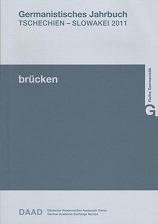
About twin formulas in the main articles of the Mährisches Tagblatt
Die Zwillingsformeln in den Leitartikeln des Mährischen Tagblatts
Keywords: Mährisches Tagblatt; Zwillingsformeln
More...
Keywords: Mährisches Tagblatt; Zwillingsformeln
More...Keywords: Fraz Kafka; Kafka; Italien; Interkulturalität; Zeichensprache;
More...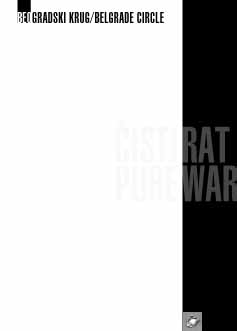
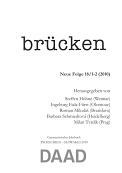
Keywords: Franz Kafka; Kafka; Yiddisch; jiddisch; jüdisch; Sprachgeschichte; Literaturgeschichte; Prag;
More...This text contains the complete bibliography for volumes 51 (1990) – 75 (2014) of the journal <i>Slovo a slovesnost</i>. The bibliography was created using a classification system established by Zdeněk Tyl and utilized in two previous bibliographies, published in Slovo a slovesnost 26, 1965, p. 318–372 (for the years 1935–1964) and in volume 51, 1990, p. 257–336 (for the years 1965–1989). The bibliography is partially annotated.
More...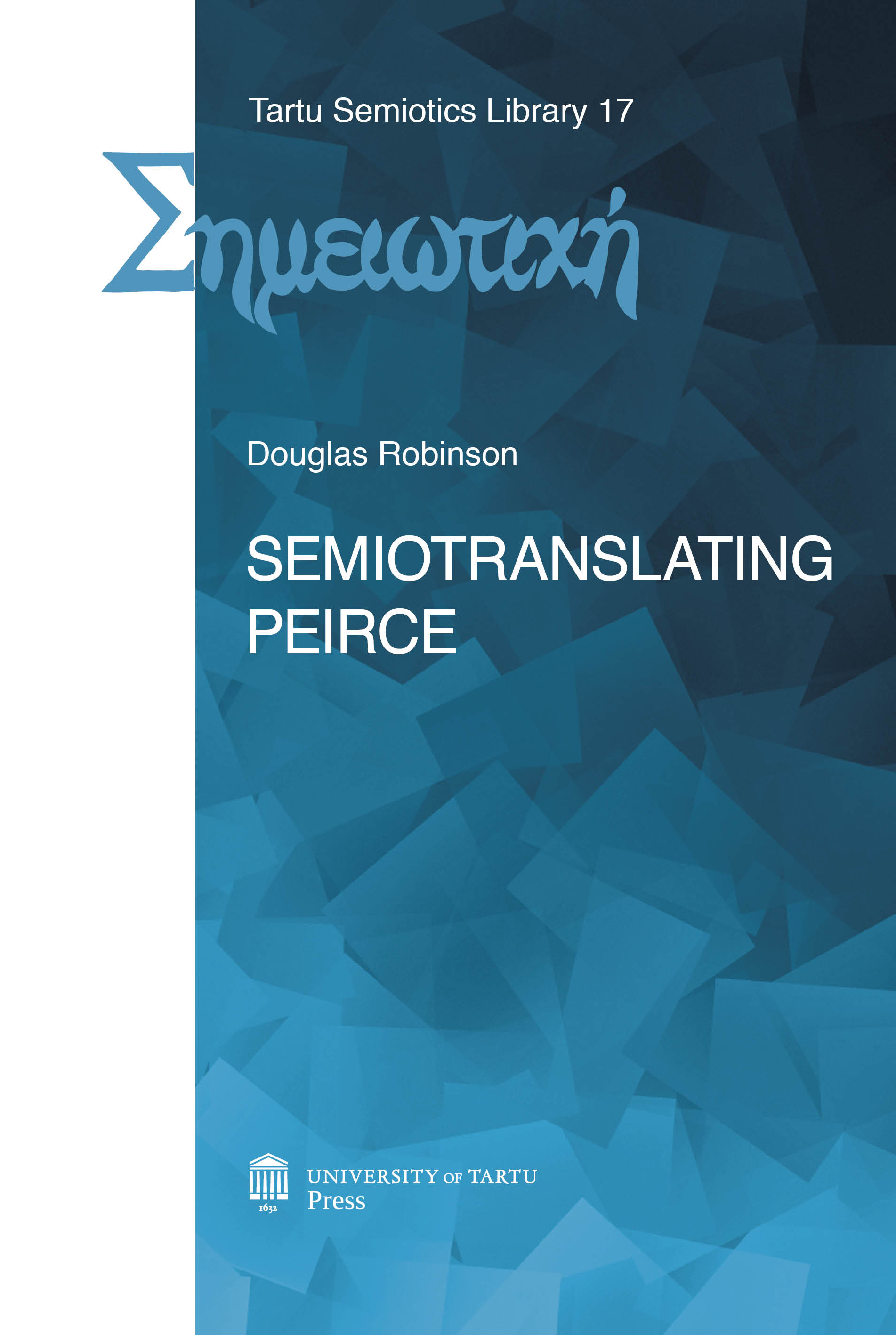
Keywords: Semiotranslation; Wittgenstein; Semiotic movement;
I mentioned in Chapter 4 that Gorlée tends to make big deductive claims (Thirds) about translation based on her reading of Peirce, and wild, interesting, bold, exciting, but also highly disjointed abductions (Firsts) that seem to be extruded by the Peircean semiotic movement from the certainties of habit-as-Thirdness to the imaginative openness of intuition-as-Firstness (CP 2.170, c. 1902) – but tends to shy away from the kinds of inductive (practical/analytical) engagements with texts that Peirce would identify as Secondness. But this is emphatically not true in the latter part of Gorlée (2012: 187–271, fully onequarter of the book), where she first tallies the differences between Peter Winch’s (CV 1980, CV 1998) two English translations of Wittgenstein’s Vermischte Bemer kungen (VB) as Culture and Value (Gorlée 2012: 187–218) and then compares French, Spanish, German, Italian, Dutch, and Swedish translations of the Brown Book (Gorlée 2012: 219–271). I propose to devote this chapter to a look at the former only: her analysis of Peter Winch’s two English translations of Wittgenstein.
More...
Still, the possibility of an instinct-experience-habit triad is not exactly alien to Peircean thought: add to the instinct-experience-form triad the passage from the late essay “A Neglected Argument for the Reality of God” (CP 6.454), where “An ‘Experience’ is a brutally produced conscious eff ect that contributes to a habit,” and the 1902 “Minute Logic,” where he defines an “instinct” as an “an inherited habit” (CP 2.170), thus bending the triad around into a cycle.
More...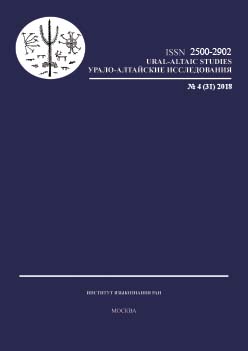
Keywords: Samoyedic; Lexicostatistics; Taxonomy; Sociolinguistics; Selkup; Nenets; Enets;
The work evaluates whether varieties in each of three Samoyedic subgroups (Nenets, Enets and Selkup) are separate languages or dialects. Sociolinguistic and structural criteria, as well lexicostatistic data, are used for the evaluation. The conclusion is that linguistically there are two Nenets, one Enets and at least two Selkup languages. 100-word Swadesh lists for the language varieties evaluated are provided in the Appendix.
More...Keywords: development of symbols; development of sign use; signs as tools; symbolic activity; cognitive development;
The paper organizes the topic of signs in Lev Vygotsky’s various writings into a coherent whole in order to study signs’ role in child development. Vygotsky related conventional signs that have their origin in interpersonal communication, and are subject to cultural history taking place over generations during historical time, to psychological functioning of individual human beings. Vygotsky’s “natural history of signs” is the study of how symbolic activity appears and develops. The paper outlines the process of inclusion of symbols within the behaviour of the child and gives an account of various changes in psychological functions and their interrelations that it brings along. In cultural development specifically human forms of behaviour appear, and children’s relationship to social and material environment is changed qualitatively. Vygotsky outlines the formation of sign use and analyses its developmental steps. Vygotsky’s approach explains how the use of various sign systems shapes both the cognitive processes in the person, the child, and the cognitive development as a whole. Vygotsky’s approach to signs is presented within the conceptual framework of its time.
More...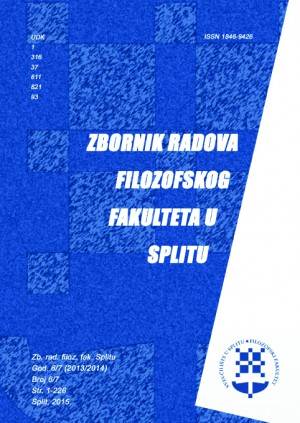
Keywords: Crime fiction; Croatian model; corpus; canon, competency of reading; genealogy of genre; postmodern deconstruction of the model;
This work provides a short overview of Croatian crime fiction with special attention placed on the form as it developed during the time of a Communist regime and afterwards. In the article the author claims that the crime fiction and the forms of fantastic prose that eventuated from this genre in the Croatian vernacular are of utmost importance for the development of post-modern Croatian prose. It is also suggested that this genre generated a certain amount of political awareness that undermined the stable picture of the canon as a diachronic chain of works without consideration of the subaltern voices/utterances othern to the hegemony of cultural power. In central part of the work two contemporary novels with strong subversive power at the formal level are discussed and analyzed. They are presented as representatives of post -modern, post-ethical prose and as the Croatian answer to post-crime fiction on the global scene. The work also suggests that the deviation from the scheme that is very often considered to be the main characteristic of the genre, in fact represents the literary value that enabled the creative interaction between the trivial and high art, mixing the popular and exclusively hegemonic in an unlikely fusion of post-modernity, either politically or in the realm of poetics and style.
More...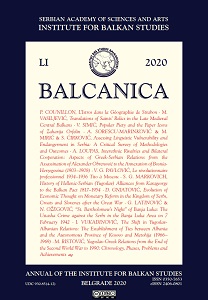
Keywords: sociolinguistics;language vulnerability; language endangerment; language vitality; language documentation; minority languages; Serbia
The paper offers a critical survey of vulnerable and endangered languages and linguistic varieties in Serbia presented in three international inventories: UNESCO’s Atlas of the World’s Languages in Danger, Ethnologue and The Catalogue of Endangered Lan- guages. As the inventories differ widely in terms of assessing the exact level of language endangerment and vulnerability, and lack to provide empirical support for their assessment, the paper provides thorough information from official local sources, relevant studies and the authors’ own field research, when available, on the language categorized as endangered (Aromanian, Banat Bulgarian, Judezmo, Vojvodina Rusyn, Romani), but also presents ad- ditional linguistic varieties which have not been registered yet by any of the mentioned inventories (Megleno-Romanian, Bayash Romanian and Vlach Romanian).
More...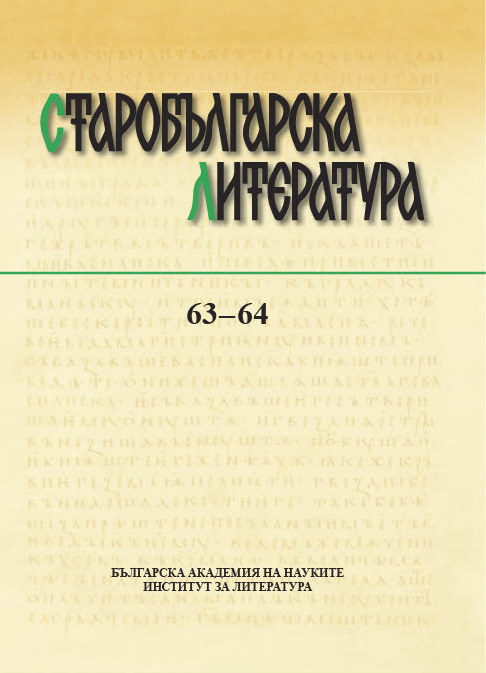
Keywords: otherness; anti-heretical polemics; historical lexicology
This article analyses some of the most important semantic fields of vocabulary, which form an evaluative attitude towards the dualistic heresies. The main source are the titles against the Iconoclasts, the Armenians, the Paulicians, and the Massalians in the Slavic translation of Panoplia Dogmatica by Euthymius Zigabenos, preserved only in the manuscript BAR Ms. slav. 296 from the Library of the Romanian Academy in Bucharest. The title against the Manicheans in manuscript HM.SMS 186 from the collection of the Chilandari Monastery on Mt Athos and the title against the Bogomils according to the edition of M. Popruzhenko (1899) are added as well. The aim is to summarize the means used for the creation of a negative image of heresies through language. The methods of selective lexical excerption and lexical-semantic analysis are applied. The core and the periphery of the nomination reflect such moral concepts that make heresies a category of culture. The lexicon against the other, the non-Orthodox, includes: lexemes marks for negative moral qualities – lie, hypocrisy, moral baseness, impiety, ungodliness, confusion, folly, debauchery; lexemes for nonverbal gestures; connotative periphrases; idioms and paroemias. In this way, the medieval anti-heretical polemic participates in the linguo-cultural conceptualisation of otherness.
More...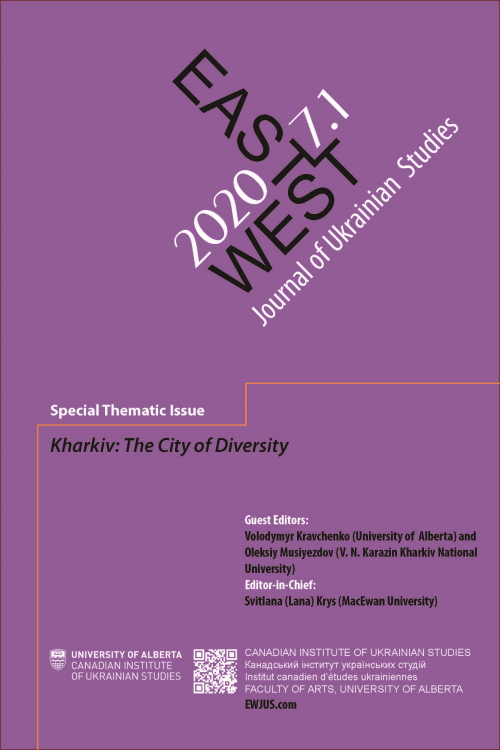
Keywords: Kharkiv; identity; urban; visual; palimpsest; vernacular;
The paper studies change and continuity in the urban semiosphere of Kharkiv in the post-Maidan period, focusing on themes such as the interplay of languages, street art, toponyms, and the significance of political, ideological, commercial, and artistic discourses in the urban space. The urban vernacular of Kharkiv is examined via the concept of the palimpsest that helps to expose the process of acceptance or rejection of the past, and to assess how things are remembered and forgotten through the tropes of the old narrative that were scrapped and replaced with new ones. The analysis of the linguistic landscape in this study focuses on a broader, more inclusive set of components that are part of public spaces, such as street graffiti metaphors and reactions to the text on graffiti. Thus, а multimodal approach is essential to provide deeper meanings and interpretations of public spaces. To examine the complex linguistic landscape, I bring together a representative collection of public signage that mirrors the dynamics of different historical, linguistic, and ideological factors that shape the contemporary Ukrainian identity, along with the too obvious and simultaneous presence within it of markers of the collective identity from the Soviet period. The juxtaposition of overlapping narratives provides a means to discuss the city’s community-building efforts. My paper introduces a few familiar cases of how post-Soviet urban dwellers have shaped social spaces.
More...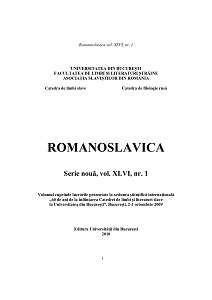
Keywords: Tetraevangel (Tetraevangheliar); Gospel Book; Bodleian Library MS; Canon; Graeci; 122; Old Slavonic; Bulgarian recension; manuscript; evangelists; monastery; scribes; illumination; frontispieces;
The Tetraevangheliar [Four Gospel Book] written by Gavril Uric in Neamţ Monastery, Moldova, in 1429 was ordered by Princess Marina, the wife of Alexander the Kind. It is now in the Bodleian Library, Oxford, as MS. Canon. Graeci. 122. Emil Turdeanu is the researcher who wrote about it the most, but the new research here extends his work by considering some of the questions he left unanswered. We enquire as to how typical the Old Slavonic in this document is of the language of manuscripts written in that period. Another question concerns how Uric’s Gospel reached Venice, and finally the paper asks when the Greek text in the manuscript was added to the original Slavonic. We do not pretend that all the answers we give are certain, but offer some suggestions supported by documented evidence.
More...Keywords: nepeš; soul/life; David; Abigail; Nabal; the story of David’s rise to power (1 Sam 16:1 – 2 Sam 5:5)
The cycles of traditions about Saul’s rise to power and reign (1 Sam 7:2–12:25; 13:1–15:31) and David’s ascension to the throne (1 Sam 16:1 – 2 Sam 5:5) portray human life as constantly under threat while simultaneously remaining in all circumstances in the hands of YHWH and dependent on His will. In order to understand the Deuteronomist’s perspective on the life/soul of a human being, one has to explore the meaning of the Hebrew term nepeš in the source material he edited. This publication, using the historical-critical method, analyses the meaning of the concept of nepeš in 1 Sam 25:29 to show on this basis: (1) literary, editorial and historical-cultural background of this verse in the context of the whole cycle of tradition: 1 Sam 16:1 – 2 Sam 5:5; (2) exegetical analysis of nepeš and other key terms used in 1 Sam 25:29; (3) theological ideas present in the Hebrew text and their implications for the biblical concept of the human soul. This is because Abigail’s blessing shows the image of God characteristic of historical books of the Old Testament, as well as sheds light on the character of David and his role in the inauguration of monarchical power in Israel. Furthermore, it allows new aspects of the semantic field of the term nepeš to be discovered.
More...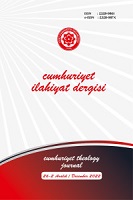
Keywords: Hadith; Literature; Turkish Poetry; Divān-e Kabīr; Quotation; Reference;
After Turks’ acquaintance with Islam, the interest they showed to religious texts continued in both scientific and literary media. Many thinkers who happened to visit Anatolian lands brought the culture, literature and customs of the geography they lived in and revealed an understanding that we can conceptualize as “Anatolian wisdom (irfān)”. One of those who serve this purpose is undoubtedly Rūmī. Rūmī influenced the geography he lived in with both his conversations and letters, and especially with poetry. In his works he used many texts that he thought belonged to the Prophet Muhammad as hadith. Apart from frequently quoting Qur’anic verses and hadiths, he made references to hadiths especially in the construction of couplets. Whether it is verse or prose, Rūmī, who takes care to act by taking the constants of religion into the center, has shown that this is his method of authorship. The idea of Sufism, which was put forward in a religious sense by Rūmī, who is an authoritative mystic-poet in Turkish-Islamic Literature, and which is based on the principle of tolerance, has been read extensively throughout the ages, and his works have been translated into many languages, especially Turkish, and opened to the access of large masses. The problematic, which also determines the purpose of this study, is the way how such an accepted scholar uses knowledge both ontologically and epistemically. As a matter of fact, the ontological determination of the narrations quoted in the work, rather than the literary and cultural aspects of Dīwān, will reveal the hadith use of Rūmī primarily. In the same way, determining the narrations used with the art of reference and pointing out their place in the main hadith books, comparing them with other works, especially Rūmī’s Mathnawī, will make his hadith sources clear. Although his Mathnawī is much more famous among his works in the course of time and according to widespread acceptance, his Dīwān is also a poetry arranged just like Mathnawī in terms of structure and content. Just as the structure and content forms of Mathnawī were shaped around Qur’anic verses and hadiths, the same style was followed in Dīwān. In this sense, while 475 verses were included with arts of quotation or reference, it was seen that 211 narrations with their repetitions took place in Dīwān-e Kabīr. When the repetitions are removed, the number of narrations in the work is 110. 23 of them are in full, 9 of them are in partial/nāqis quotations and 78 narrations are used by reference. In addition, as a result of our examination, together with the narrations used in the work through reference, couplets that are not directly cited but contain implicit hadiths are also available in Rūmī’s work. In addition to words, parables, proverbs and idioms attributed to previous prophets, important towns, persons and events are also used functionally within the characteristic structure of the work. Within the scope of this study, 110 narrations used by Rūmī, excluding repetitive narrations, were examined. According to the result obtained from takhrīj search, 56 of the narrations in question are found in the main hadith books and are accepted as authentic/sahīh. The judgment of hasan has been given about 6 narrations. Therefore, the total of acceptable/maqbūl narrations in the work reaches 62. One of the acceptable/maqbūl narrations is a mawqūf hadith. In addition to 44 narrations, which are not included in the basic hadith books and are judged to be weak/da'īf, fabricated/mawdū‘ or false, there are 4 texts that are not hadith but belong to one of the predecessors/salaf, and there are 48 rejected/mardūd narrations. Considering distribution of the narrations used by Rūmī, texts on the relationship between Allah and the servant were preferred, and the narrations on moral issues were also used intensively. In addition, the texts containing the propositions about the prophet and religion were also preferred by him. Apart from this, matters of faith and worship; narrations about women, social life and medicine are some of the prominent topics. It should be noted here that Rūmī does not have any concerns about the authenticity of the hadiths, both in his choice of narrations and in the process of converting them into quotation or reference form. This result can be easily obtained when the acceptable narrations used in Dīwān are evaluated together with the weak/da'īf or fabricated/mawdū‘ narrations. Because the author’s view of the narration, which is considered weak/ da'īf or fabricated/mawdū‘, and the view of the narration, which is accepted as authentic, are shaped according to the correspondence of the message to be given and the meaning of the narration. In other words, according to him, contribution of the content of the text to the message is more important than the soundness of the hadiths. In addition, mystical thoughts and teachings that shaped the mental world of Rūmī are also evident in his choice of the narrations in question.
More...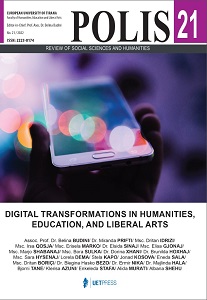
Keywords: communication; new media technology; popular media; entertainment; computer games;
This study investigates the effects of computer games on teenagers in Famagusta, Turkish Republic of Northern Cyprus. Most games are inspired from other media as books, TV, films, etc. For this kind of media entertainment, the term ‘passive entertainment’ is used. However, computer games and video games are considered as ‘interactive entertainment’. Computer games are interactive because they make people to feel that they are inside the story. 400 teenagers, 200 boys and 200 girls participated in this research from four different schools in Famagusta. Two of the schools are high schools and two others are secondary schools. Each participant completed a questionnaire with 35 closed-ended questions. The data were collected and analyzed by using SPSS 10.00 program. Using the data gathered with the questionnaire, whether playing computer games affects the children’s school performance; whether decreases their participation on social activities; whether evokes aggressive behavior; and whether causes the feeling of loneliness is discussed.
More...Keywords: Anarchy; fire; political ecology; swidden; Tau-Buhid; territory;
The article challenges the assumption that land tenure is contingent on acquiring a land title. It argues that for Indigenous peoples a land may be delineated, occupied, utilised, and collectively owned through the concept of territoriality. Through a combined ‘anarchist anthropology’ and political ecology the article provides ethnographic evidence from among the Tau-Buhid as a case in point to show that through their everyday relationship with fire and ignition practices territoriality is reinforced among their communities as a basis of land tenure. Thus, despite efforts of the Philippine state to phase out all kinds of fire practice on theirland, a portion of which is a declared protected area, ignition continues as a way of orchestrating territorial autonomy against state sovereignty in the highlands. Ultimately, through such practices Indigenous lands have metaphorically transformed into ‘territories of fire’, a frontier where the state is irrelevant to Indigenouslife and where state-control apparatuses are inoperable.
More...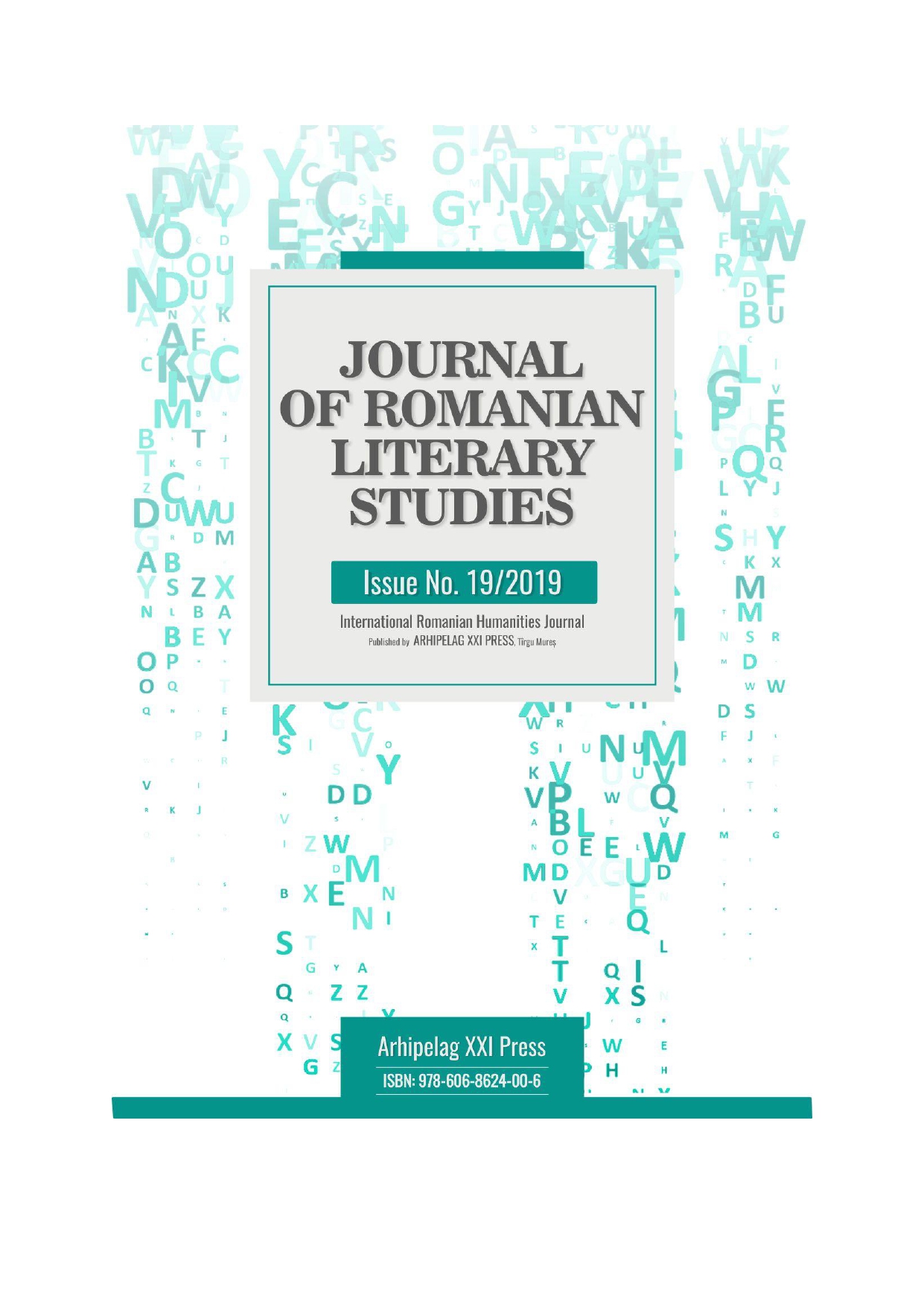
Keywords: Romance comparison research; argumental structure; direct object; passive experimenter; doubling; direct object marking (DOM); system similarities;
In this research, we will focus on the active-transitive argumental structure (the second argument, i.e. the direct object personal pronoun) of the Romanian a se mira ‘wonder’, compared with the syntactic framework of the corresponding heteronyms, fr. étonner and sp. extrañar. As members of the psych (wonder) verbs, the terms that we discuss imply the morphological actualization of the direct object (with the theta-role of passive experimenter) as a [+ animated], [+ personal] pronoun. The animated / personal nature of the experimenter is associated with certain grammatical consequences, especially in Romanian and Spanish, where the use the personal accusative morpheme entails the direct object doubling, either as anticipation and / or resumptive doubling. In this context, French stands out as not displaying a personal accusative morpheme, the “doubling” (of the direct object) being a stylistic phenomenon par excellence. Considering these aspects, it is not surprising that Romanian and Spanish display more frequent discursive situations of the direct object doubling: in these Romance idioms, the phenomenon of doubling is a grammatical / normative aspect, not limited (strictly or fundamentally) to the stylistic dimension.
More...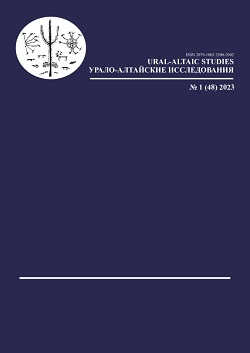
Keywords: Chuvash language; dialectology; relativization; nominal modification; noun; semantics; syntax;
The article analyzes features of relativization in Maloe Karachkino dialect of Chuvash (> Bulgar > Turkic). The elicitation data (collected by the author in a series of field trips from 2018 to 2020) shows that the gap strategy [Comrie, Kuteva 2005] is the main relativization mechanism in Maloe Karachkino dialect, and the syntactic restrictions on the relativized position are very weak. More precisely, only the positions of caritive object and object of comparison are not available for relativization. Otherwise, Maloe Karachkino dialect covers almost the entire Accessibility Hierarchy [Keenan, Comrie 1979]. At the same time, the success of relativization often depends on the naturalness of the connection between the predicate and the argument in the target position. The weakness of purely syntactic restrictions and the reliance on pragmatic naturalness give grounds to consider the Maloe Karachkino’s data in the context of the theory of General noun-modifying clause constructions (GNMC) [Matsumoto et al. 2017]. Maloe Karachkino dialect then occupies an intermediate position in the GNMC typology, since it shows identical design of relative clauses and noun-modifying sentential complements, but only limitedly allows frame constructions, which are supposed to be diagnostic of GNMC. However, as shown in the article, there are certain syntactic differences between relativization clauses and nominal sentential complements. In addition, the revision of the existing literature on the GNMC phenomenon, indicates that frame constructions are usually not described for the Turkic languages. Moreover, a more detailed analysis of the constructions for relativization and complementation reveals the non-identity of these structures in all languages where any diagnostics were carried out. Thus, the data of the Maloe Karachkino dialect contributes to the typology of phenomena that have recently been united under the term of GNMC. The data of this and some other idioms show that GNMC phenomenon turns out to be much less homogeneous than it is proposed to consider in [Matsumoto et al. 2017].
More...